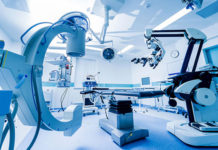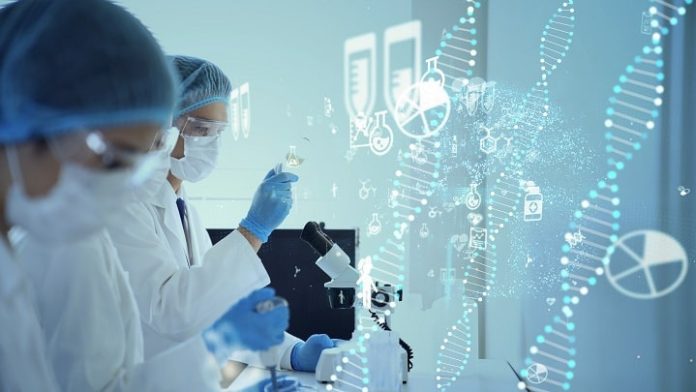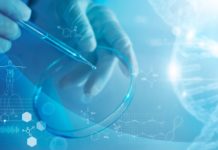While making sure to get the kids ready for school, imagine a person of interest managing to steal a quick glance at her phone and discovering a notification informing her that one of the instruments in her lab was not functioning. Her group had a packed schedule in the coming weeks, so it was indeed crucial that all systems were functioning smoothly.
While browsing through the instrument’s service history on her phone, Janice observes a few repairs in the log. She goes through the faults page and moves on to select Place Service Demand which is there at the drop-down menu. As she arrives at the office, she is filled with confidence that the service request will be in motion and soon the operations will be back on track.
Janice notices that the lab is not very crowded. However, there is a lot of activity as robots, samplers, as well as spectrometers diligently carry out their tasks without any human intervention. Occasionally, she spots a handful of individuals in lab coats conducting physical surveys of solvents or sample lines. However, the majority of the team is gathered around computer monitors, engaged in a thoughtful discussion about the test results from the previous night, and thinking about potential process changes that the development team should implement in order to bring everything back to the desired specifications.
Janice discovers a sticky note on her desk that states that it just wanted to let her know that they had received your call for service and assistance was on its way.
While there happen to be certain aspects of Janice’s lab life that are already present, the overall integration of instrumentation as well as information systems happens to be tantalizingly close in the near future. Many have gone on to describe this impending era as Lab 4.01 which happens to stand on the robust foundation of the Fourth Industrial Revolution.
It is well to be noted that during the first three Industrial Revolutions, mechanical advancements went on to revolutionize labor, right from manual work mechanization to mass production along with automation. But, the integration of computational tools along with the digitization of data went on to usher in the Information Age. In spite of this wealth of data, information often goes on to remain isolated, and pushed so as to act upon it, which happens to be labor-intensive.
Transformative enhancers
There happen to be several factors that are influencing the fulfillment of this promise throughout all industries2 such as:
Cloud computing eliminates the need for companies to maintain costly data centers, shifting that responsibility to cloud service providers who can go on to operate efficiently and offer a certain level of security.
Accepting cloud technology empowers organizations to tap into the potential of the Internet of Things- IoT which helps them have seamless connectivity and communication across any distance. Accessing this metaverse enables employees to easily retrieve information from any location and builds collaboration both within as well as throughout the organization.
Distributed access, on the other hand, needs enhanced cybersecurity measures. As companies shift away from legacy systems and processes, there happens to be trend of making cybersecurity into the initial development cycle, rather than having it as a separate layer.
Synergies when it comes to these advances as well as legacy operations happen to be identified and exploited by the AI and ML tools in sync with the expertise as far as the on-site staff is concerned, who can provide insights as well as practical realities that may not yet be easily measured or even digitized. In one of the descriptions of the lab of the future3, the advantages of AI to the lab scientist happen to be seen as multivariate, helping with experimental design and execution of how data gets captured and even analyzed, and at the same time augmenting those efforts by way of offering fresh insights and suggesting novel areas to look into.
The rising business case for Software-as-a-Service- SaaS happens to be strongly linked to the cloud which enables the organizations to easily access and evaluate software platforms while improving their processes hence discovering and scaling the solutions that are most suitable for their needs. One advantage of SaaS is that the providers take care of system maintenance and upgrades, ensuring access to the freshest functionality.
The global push for sustainability is a major driving force behind the digital revolution since organizations and governments are actively seeking ways to reduce their ecological footprints. Organizations are looking for ways to optimize the life cycles of their lab equipment.
The digital revolution will also call for the need for standardization and harmonization so as to ensure that platforms throughout organizations, industries, as well as global regions go on to generate compatible data that can be seamlessly integrated into an in-depth understanding of the project.
The progress that digital is witnessing in the analytical labs of today
Advancements in technology have revolutionized the way analytical labs operate in the modern era.
Digitalization involves the integration of cloud-connected hardware and software to enhance every step of the process, right from samples arriving at the door to making sure that the results happen to be easily accessible to stakeholders, even outside the organization4. Moreover, beyond just accessing the data, it is the capacity to process, analyze, and visualize the information both within the lab and also with collaborators who can go on to integrate the findings along with the outcomes in their labs.
From the standpoint of operations, digitalization happens to be also asset and resource management and scheduling, in which the systems track equipment utilization and wear-and-tear in real time so as to optimize activity and at the same time also reduce downtime. It also, in the same way, diligently keeps track of supply inventories and sends smart alerts to make sure that the lab does not run into costly delays that happen to affect the analytical lab.
Furthermore, with the help of AI and ML, digitalization enables decision-making in real time all throughout the various elements, like application and workflow adjustments, upstream process modifications, and even downstream delivery and expectation management.
References
- Comeaga, M. L. Digital transformation of the laboratories. IOP Conf Series: Mater Sci Engin. 2022;1268:012001
- Jovičić, S. Ž. and Vitkus, D. Digital transformation towards the clinical laboratory of the future. Perspectives for the next decade. Clin Chem Lab Med. 2023;61:567-569
- Shute, R., and Lynch, N. The next big developments – The lab of the future. In Digital transformation of the laboratory: A practical guide to the connected lab. Eds. Zupancic, K., Pavlek, T., Erjavec, J. Wiley-VCH GmbH. 2021
- Realizing the digital lab today. Lab Manager. January 19, 2023. (https://www.labmanager.com/realizing-the-digital-lab-today-30625; Accessed February 16, 2024)






















